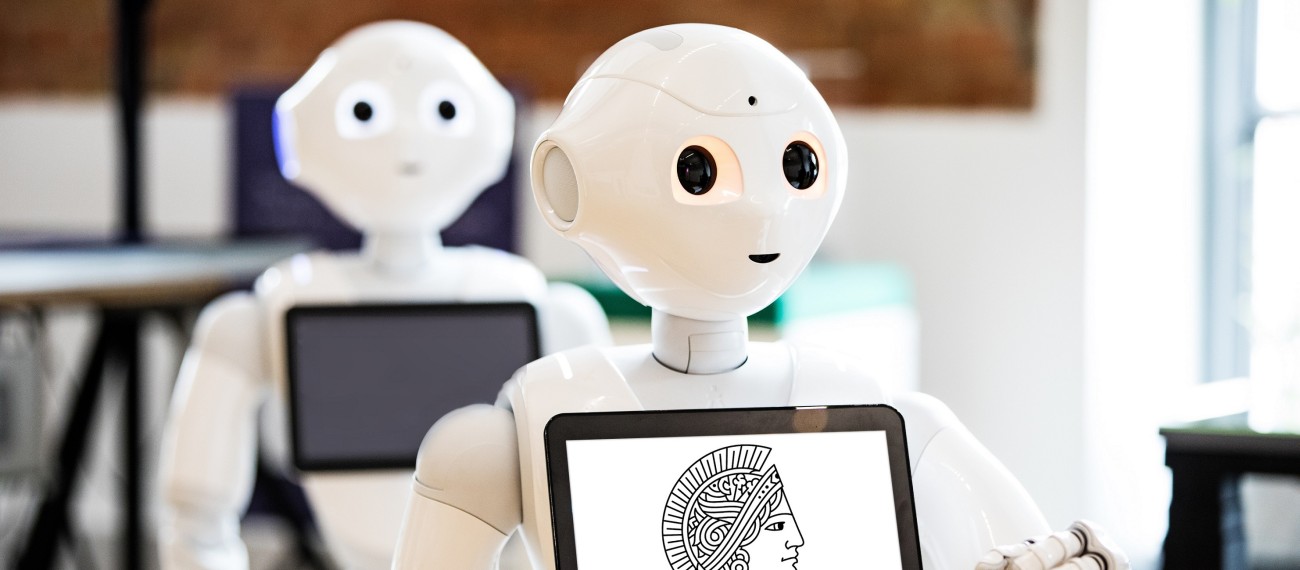Sample research questions of our group are:
- How can service robots be applied in different service areas in a responsible manner?
- Which design aspects and behaviors are important for service robots to support frontline employees during the service encounter with their customers?
- How should a service robot look like in terms of human-likeness to be accepted by customers during the service encounter?
Our research in this field is interdisciplinary in nature in that it integrates insights from psychology, marketing research, and research on human-robot interaction. We focus on the responsible design and application of robots. This includes the basic notion a human user-centric design and placement of social robots.
Sample Publications:
- Stock, Ruth Maria (2018), Can Service Robots Hamper Customer Anger and Aggression After a Service Failure?, International Conference on Information Systems 2018, San Francisco, USA.
- Stock, Ruth Maria/Merkle, Moritz (2018), Customer Responses to Robotic Innovative Behavior Cues During the Service Encounter, International Conference on Information Systems 2018, San Francisco, USA.
- Stock, Ruth/Merkle, Moritz (2018), Can Humanoid Service Robots Perform Better Than Service Employees? A Comparison of Innovative Behavior Cues, 51st Hawaii International Conference on System Sciences, Waikoloa, USA.
- Stock, Ruth/de Jong, Ad/Zacharias, Nicolas (2017), Frontline Employees’ Innovative Service Behavior as Key to Customer Loyalty: Insights into FLEs’ Resource Gain Spiral, Journal of Product Innovation Management (JPIM) 34, 2, 223-245.
- Stock, Ruth/Merkle, Moritz (2017), A Service Robot Acceptance Model: User Acceptance of Humanoid Robots During Service Encounters, IEEE International Conference on Pervasive Computing and Communications 2017, Kailua-Kona, USA.
- Stock, Ruth (2016), Emotion Transfer from Frontline Social Robots to Human Customers During Service Encounters: Testing an Artificial Emotional Contagion Model, International Conference on Information Systems 2016, Dublin, Ireland.
- Stock, Ruth/Bednarek, Marei (2014), As They Sow, so Shall They Reap: Customers’ Influence on Customer Satisfaction at the Customer Interface, Journal of the Academy of Marketing Science(JAMS), 42, 4, 400-414.
- Stock, Ruth (2014), How Should Customers be Integrated for Effective Interorganizational NPD Teams? An Input-Process-Output Perspective, Journal of Product Innovation Management (JPIM), 31, 3, 535-551.
- Homburg, Christian/Hoyer, Wayne/Stock, Ruth (2007), How to Get Lost Customers Back? A Study of Antecedents of Relationship Revival, Journal of the Academy of Marketing Science (JAMS), 35, 4, 461-474.
- Homburg, Christian/Stock, Ruth (2004), The Link between Salespeople’s Job Satisfaction and Customer Satisfaction in a Business-to-Business Context: A Dyadic Analysis, Journal of the Academy of Marketing Science (JAMS), 32, 2, 144-158.
This research area is financially supported by a number of projects:
- Social robots during the service encounter (2017-2020; DFG Research Grants)
- RoboTrust (2020-2023, pilot project of the Zentrum verantwortungsbewusste Digitalisierung together with Goethe University Frankfurt, University of Kassel)
- Handshake Turing Test – Android robot vs. human (2019-2021, FiF project together with Prof. Jan Peters, Ph.D.)
- Customer Relationship Marketing and Service Robots, Acceptance of Social Robots (leap in time Stiftung)
- Key potentials of older employees in the service sector (VolkswagenStiftung, 2008-2010)



